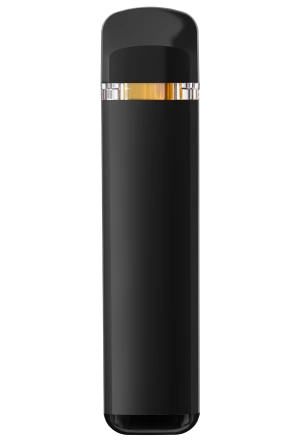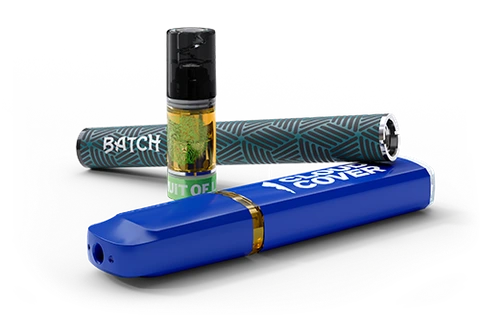Cannabis & Tech: Today Up in Smoke: How E-Cig Tech Disappoints for Cannabis
Consumers and extractors are learning the hard way that when outdated e-cig tech is applied to cannabis vaping, consumers are often left with a poor experience. Worse still, terpenes and cannabinoids are compromised and the flavor is damaged.
The rapid advancement of cannabis extraction has highlighted a significant issue in the industry: the incompatibility of e-cigarette technology with cannabis oils. Nicotine e-juice and cannabis oils cannot be used with the same technology and yield the best results.
E-juice vs cannabis oils
Marketed as a “healthier” alternative to traditional tobacco consumption, e-cigarettes are often positioned as a replacement for smoking. Current nicotine vape devices contain large cartridges, high-powered batteries, and low resistance coils designed to enhance nicotine concentration and clouds. These devices are built specifically to vaporize glycerol, propylene glycol, flavorings, and nicotine combinations for inhalation.
By contrast, cannabis vapes contain various constituents including cannabinoids, terpenes, waxes, and flavonoids. The difference in viscosity and chemical composition of cannabis vape liquids means that devices and technology appropriate for e-juice will not function the same way for cannabis.
Here’s why.
Tank size and material matters
For nicotine vaping, a large-capacity design makes sense. Nicotine and its additives are more forgiving to the shelf stability of e-liquid. However, this couldn’t be further from the truth for cannabis oil. Cannabis’s physical and chemical properties have different patterns of behavior and interactions. This requires more intent on development and delivery, as cannabis is not nearly as accommodating.
Over time, your oil may become compromised as its composition breaks down, not to mention the potential for leaching, and the likely impact on the quality, and taste of your oil.
As cannabis vape technology continues to advance, some cannabis hardware manufacturers are exploring larger capacity options. This is why when selecting a larger capacity tank, you should inquire what materials are being used in the hardware. Especially those materials that come in contact with the oil. Additionally, compatibility impacts the experience and life cycle of the oil.
Tanks manufactured from a thermoplastic compound or borosilicate glass ensure terpene resistance and avoid leaching in normal and heated states. It avoids degradation, significantly decreasing the risk of leaching.
Bottom line. Plastics appropriately used for nicotine juices generally cannot withstand use with cannabis extracts. Vape hardware must contain materials designed explicitly for cannabis oils.
Rapid heating is not always good
Most e-cigarettes use NiChrome, a nickel-chromium blend for vape coils. The issue with NiChrome is that it heats cannabis oil quickly. Here’s the problem: a faster heat rate has the potential to disrupt and negatively impact terpenes and accelerate the oxidation of your oil. Additionally, NiChrome puts more oxidative stress on the wires within the hardware itself.
If overheated or heated too quickly, terpenes lose their flavor. Efficacy diminishes, resulting in a poor vaping experience.
On the other hand, specialist cannabis vape hardware manufacturers use proprietary heating coils. These are engineered from specialized alloys that heat extracts in a controlled way. Damaging heat spikes are avoided with the result that your terpenes and cannabinoids are preserved, and the flavor of your oil remains true to the strain.
Be careful how cotton is used
The construction of e-cigarettes includes mesh and cotton batting. The cotton acts as the saturation component and by design makes direct contact with the heating element in e-cigs. Said another way, the cotton batting acts as the wick.
This design, when used for cannabis vaping, runs the real risk of burning your oils, and can potentially lead to chemical changes that become questionable and detrimental to the overall experience and life cycle of the oil.
For this reason, the appropriate design for cannabis vape devices is to use the cotton as a semi-permeable layer, securing the ceramic core in the housing. This design prevents the cotton from coming into contact with the heating element. The cotton allows oil to pass evenly to the core for heating and does not function as a wick.
The danger of high voltage
When designing batteries for nicotine vapes, e-cigarette manufacturers apply high voltages that exceed the temperatures required for cannabis oil vaporization.
For example, a standard e-cig battery typically has voltage options of 3.8V, 4.5V, and 5.0V. This power level destroys both the flavor and properties of cannabis oil.
Instead, to retain the full flavor profile of cannabis oil, a lower heat setting works best. To preserve terpenes and cannabinoids while maintaining consistent vapor density, we found the following settings to be ideal:
- 2.6V for flavor and terpene retention
- 3.0V for a balanced vaping experience
- 3.4V for big clouds
Power modulation is another consideration beyond single voltage output. In both minimal and complicated forms, power modulation can be advantageous for overall experience as well as more complicated oil types.
In simple terms, power modulation is the application of setting high or low voltage points across the duration of a hit on a vape pen. These voltage points allow the core to slightly cool at dictated times before ramping up the heat again. This allows the temperature ceiling to maintain a stable level throughout the duration of a hit. It also ensures further preservation of terpene profiles.
Choosing the right hardware for your oils
E-cigarettes laid the groundwork for cannabis vapes. But, as the industry advances, so too must vape hardware. And, as many manufacturers have learned the hard way, outmoded e-cig technology is not up to the task.
Hardware selection is often an afterthought. However, selecting appropriate hardware is an important decision that directly impacts the perception of your oil and brand. Consider how your oil will interact with the design and components used in your proposed vape device. And keep in mind the impact of size, construction materials, and heating ramp rate.
Source: https://cannatechtoday.com/up-in-smoke-how-e-cig-vape-technology-disappoints-for-cannabis/

































































